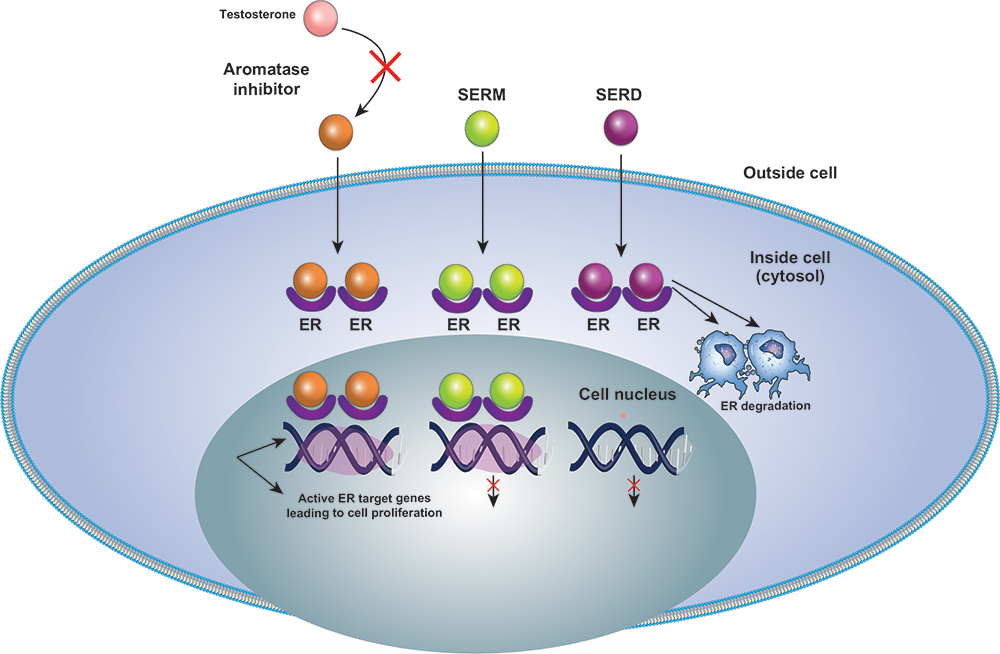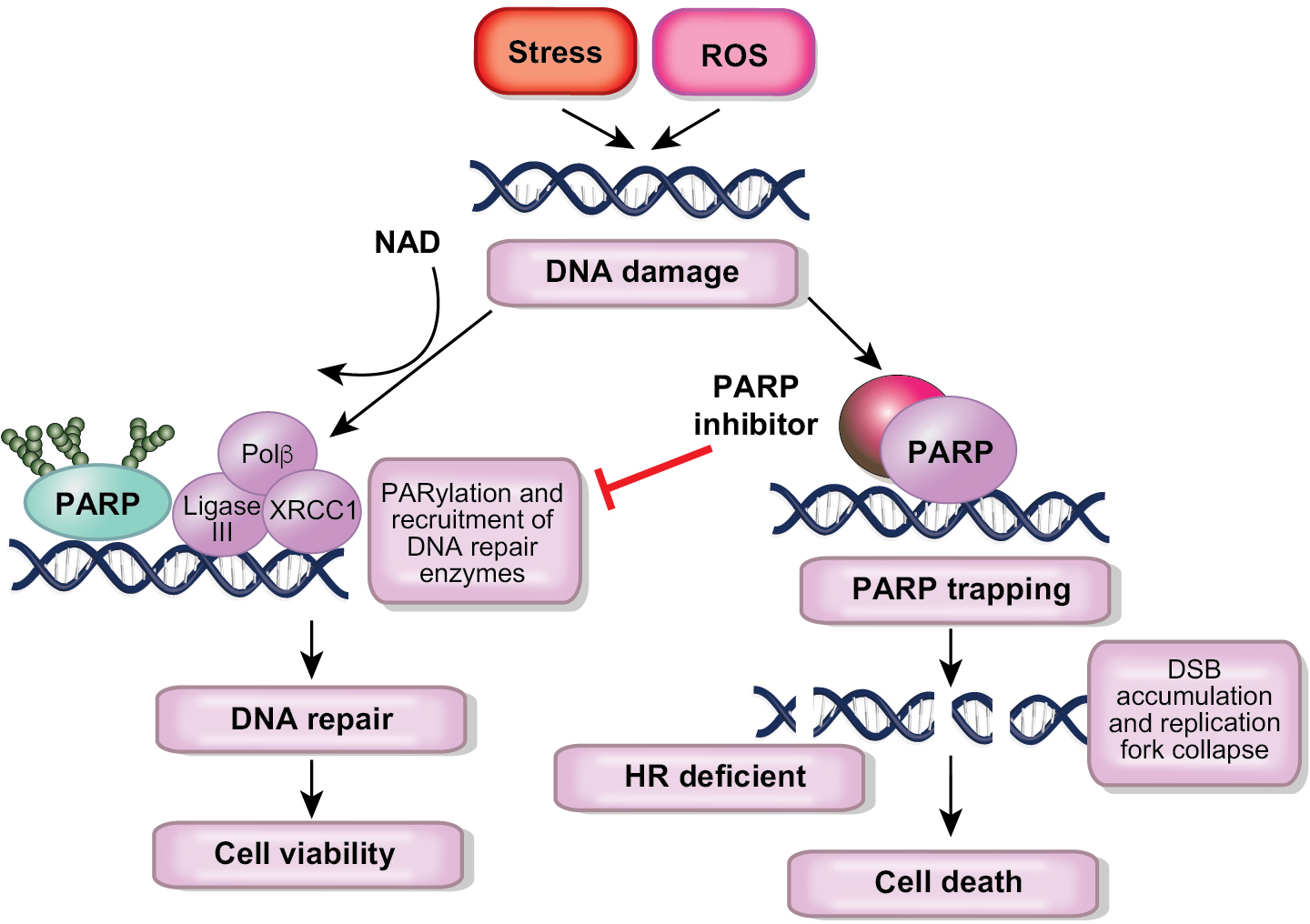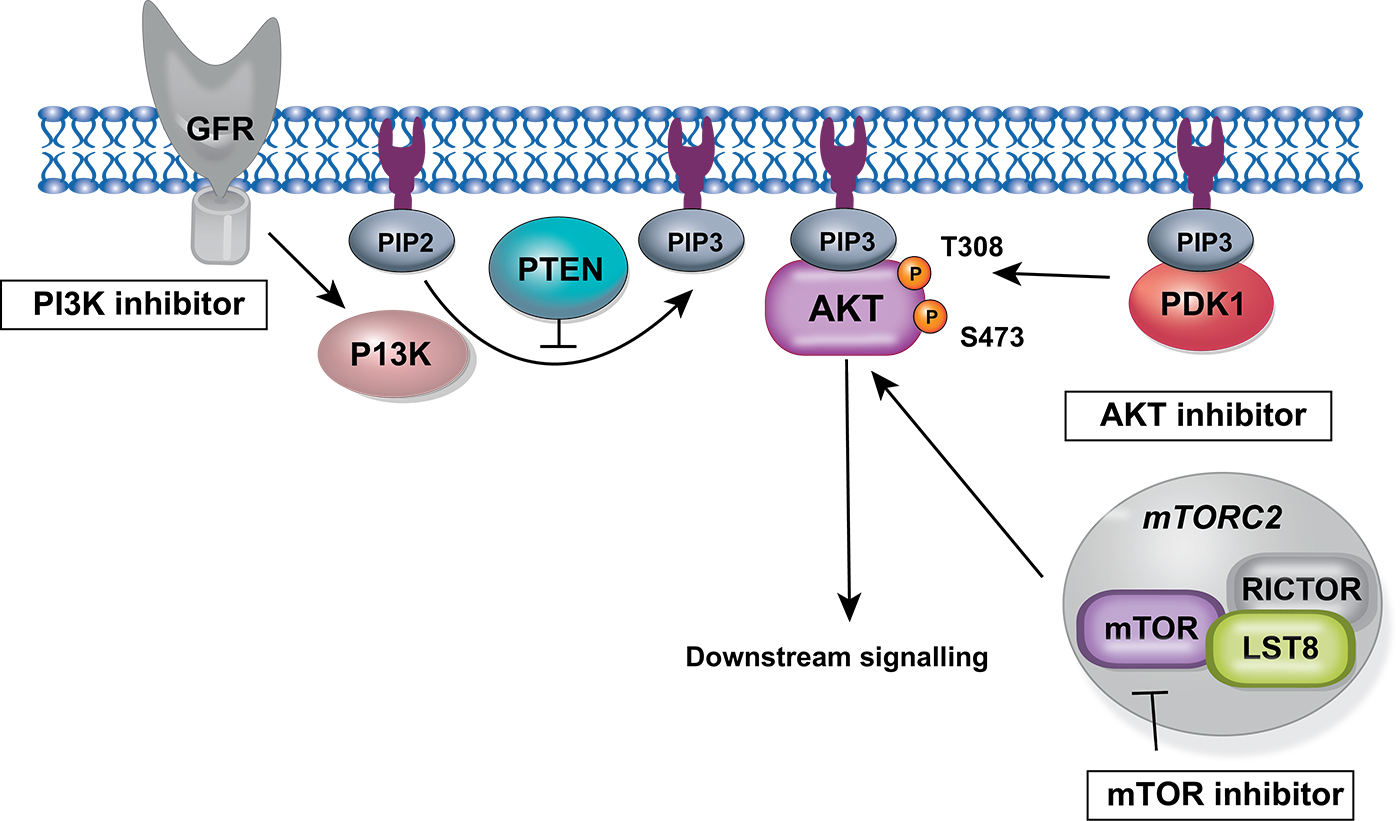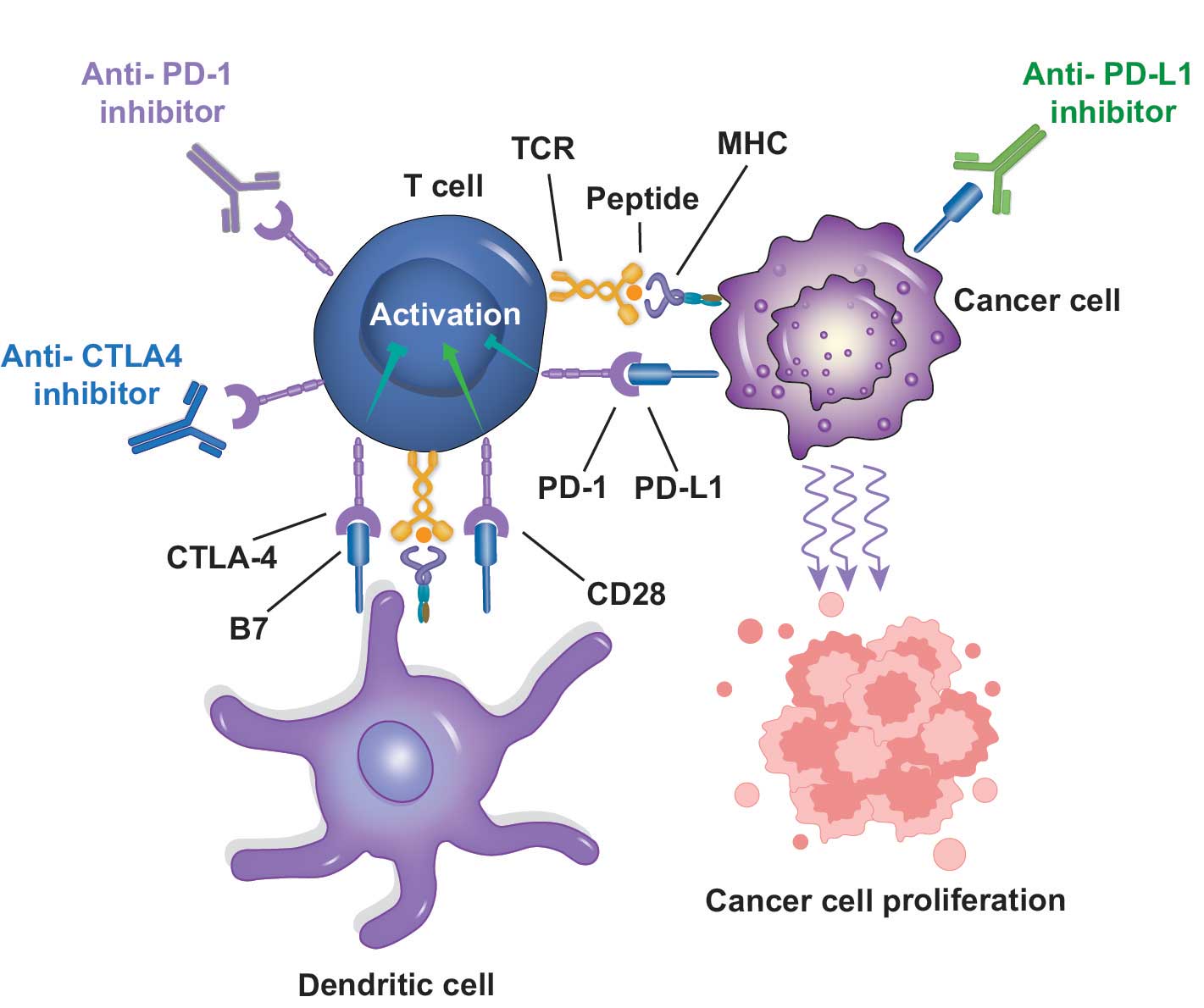2024 Hawaii Breast Cancer

Targeting ER Signaling
Breast cancer is a complex disease with various subtypes, among which estrogen receptor-positive (ER+) breast cancer is the most common. ER signaling plays a crucial role in the growth and progression of this subtype. Targeting ER signaling has been a cornerstone in the management of ER+ breast cancer. Several therapeutic strategies have been developed to disrupt ER signaling, including aromatase inhibitors, anti-estrogens such as Selective Estrogen Receptor Degraders (SERDs) and Selective Estrogen Receptor Modulators (SERMs), CDK4/6 inhibitors, PI3K inhibitors, AKT inhibitors, and PARP inhibitors.

Endocrine Therapy in Breast Cancer
Endocrine therapy encompasses various strategies, including the suppression of estrogen production or direct targeting of the estrogen receptor. Aromatase inhibitors act by inhibiting the conversion of androgens to estrogen, thereby reducing circulating estradiol levels and diminishing estrogen receptor (ER) activation. Selective estrogen receptor modulators (SERMs), such as tamoxifen, bind to intracellular ERs, competing with estrogen. Once bound, these SERM-bound dimers interact with transcriptional factors, inhibiting transcriptional activities in breast tissue. Selective estrogen receptor degraders (SERDs), such as fulvestrant, destabilize the ER by binding to it, preventing the establishment of an open chromatin conformation that typically leads to the transcription of ER-regulated genes. Additionally, the binding of SERD to ER hampers its mobility, ultimately leading to complex degradation, resulting in the downregulation and degradation of the receptor protein.

ADC in Breast Cancer
ADCs represent a valuable addition to the treatment armamentarium for breast cancer, offering a targeted approach that combines the specificity of monoclonal antibodies with the cytotoxic potency of chemotherapy. ADCs are designed to specifically target tumor cells by binding to antigens that are overexpressed on the surface of cancer cells while sparing healthy tissues. By delivering potent cytotoxic payloads directly to cancer cells, ADCs can achieve higher concentrations of chemotherapy within tumors while minimizing systemic toxicity. This targeted approach can result in improved efficacy compared to traditional chemotherapy, leading to better tumor control and prolonged survival outcomes.

CDK4/6 inhibitors in Breast Cancer
Cyclin-dependent kinase 4 and 6 (CDK4/6) inhibitors represent a significant advancement in the treatment of hormone receptor-positive (HR+) breast cancer, profoundly impacting patient outcomes. These inhibitors specifically target the dysregulated cell cycle machinery in cancer cells while sparing normal cells, When combined with endocrine therapy such as aromatase inhibitors or SERMs/SERDs CDK4/6 inhibitors have demonstrated remarkable efficacy in improving progression-free survival in patients. CDK4/6 inhibitors are being investigated in the neoadjuvant and adjuvant settings, with promising results suggesting their potential to improve pathological complete response rates and long-term survival outcomes in early-stage HR+ breast cancer.

PARP Inhibitors as Therapeutic Intervention
PARP (Poly ADP-ribose polymerase) inhibitors have emerged as a promising therapeutic intervention in breast cancer, particularly in the treatment of BRCA-mutated tumors. BRCA1 and BRCA2 are genes involved in DNA repair mechanisms, and mutations in these genes predispose individuals to breast cancer by impairing DNA repair processes, leading to genomic instability. PARP inhibitors exploit this vulnerability by targeting the DNA repair pathway, specifically in tumors with BRCA mutations

Targeting PI3K/AKT/mTOR Pathway in
Breast Cancer
The serine/threonine kinase AKT is a key component of the PI3K/AKT/mTOR signaling pathway as it exerts a pivotal role in cell growth, proliferation, survival, and metabolism. Deregulation of this pathway is a common event in breast cancer including hormone receptor-positive (HR+) disease, HER2-amplified, and triple negative tumors. PI3K signaling is frequently altered in breast cancer (BC) as mutations of the PI3K catalytic alpha subunit (PIK3CA) are common events, occurring in 9–45% of BC according to the subtype, followed by PTEN loss of function (13–35%) and, less frequently, AKT substitutions (2–4%) or amplification (5–10%).

Immune Checkpoint Inhibitors in Breast Cancer
Programmed cell death protein 1 (PD-1), programmed death-ligand 1 (PD-L1), and cytotoxic T-lymphocyte-associated protein 4 (CTLA-4) inhibitors represent crucial components of immune checkpoint inhibitors (ICIs) that have revolutionized cancer therapy, including breast cancer. PD-1 and PD-L1 inhibitors work by blocking the interaction between PD-1, expressed on activated T cells, and its ligand PD-L1, expressed on tumor cells and immune cells. In breast cancer, particularly in the triple-negative subtype, which often exhibits high PD-L1 expression and increased tumor-infiltrating lymphocytes (TILs), PD-1/PD-L1 inhibitors have demonstrated significant efficacy. CTLA-4 on the other hand competes with the co-stimulatory molecule CD28 for binding to B7 ligands on antigen-presenting cells, thereby dampening T cell activation. Combination therapies involving PD-1/PD-L1 and CTLA-4 inhibitors, along with traditional chemotherapy or other targeted agents, are being explored to enhance treatment efficacy.

